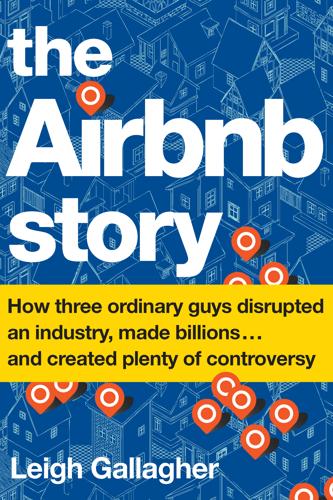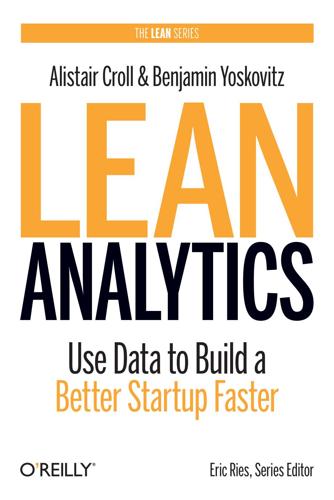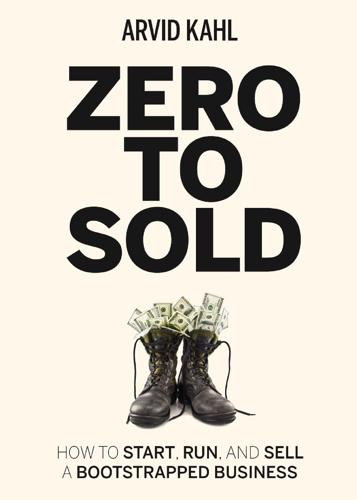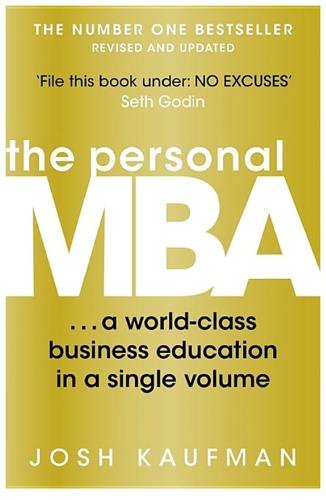
The Launch Pad: Inside Y Combinator, Silicon Valley's Most Exclusive School for Startups
by
Randall Stross
Published 4 Sep 2013
And by “ignorance”—Graham acknowledged that he was deliberately provocative in his word choice—he meant an innocent lack of awareness of the trials that came with doing a startup. It was best for founders not to know what was ahead, or they might not even try.1 “Ramen profitable” was one of Graham’s best-known precepts in the world of startups. Ramen profitability refers to the moment when a startup, in Graham’s words, “makes just enough to pay the founders’ living expenses.”2 This was attainable only if those expenses were minimal. Graham personally knew what startup life was like, from a three-year period, 1995 to 1998, a decade before he founded Y Combinator.
…
PG, “A Student’s Guide to Startups,” October 2006, http://paulgraham.com/mit.html. 2. PG uses “ramen” only as a figurative term and takes pains to say that he does not prescribe an unhealthy diet of instant ramen. Rice and beans were his recommendation for healthy and inexpensive eating. PG, “Ramen Profitable,” July 2009, www.paulgraham.com/ramenprofitable.html. 3. PG, “How Not to Die,” August 2007, http://paulgraham.com/die.html. 4. PG, “The 18 Mistakes That Kill Startups,” October 2006, www.paulgraham.com/startupmistakes.html. 5. Jessica Livingston, Founders at Work: Stories of Startups’ Early Days (Berkeley, CA: Apress, 2007), 205–22.
…
S., 200 Ellison, Larry, 161 Envolve, 102–3, 134, 194 Etzel, Chad, 219–20 Europe, 56, 154–55 Eventful, 72 Excelerate Labs, 41, 169, 263n14 Facebook accounts, 107 acquisition offer, 159 Codecademy, 227 employment offers, 52 executives, 60 female users, 256n10 FriendFeed, 63, 265n8 games, 107 Graffiti app, 165 Interview Street, 213 investment opportunity, 137–38 NowSpots, 168 OpenID, 156 photos, 10 scraping pages of, 138 social network, not first, 231 Socialcam, 147 Fake, Caterina, 46 Feld, Brad, 41 Feldman, Susan, 54 Ferdowsi, Arash, 161 Feynman, Richard, 2–3 Field, Chris, 125, 214–15 Finland, 238 FirstVirtual, 105 5-Hour Energy drink, 134 500 Startups, 35, 87 Flickr, 43, 46 Flipboard, 265n1 Flora, Brad, 168–70 Florida, Richard, 254n15 Fong, Matthew, 252n7 Foodspotting, 54 Forbes, 191 Forman, Charles, 225 Founders at Work (Livingston), 46, 204 Four11, 151 Foursquare, 11, 74, 201, 265n1 France, 237, 238 Fridge, The, 73 FriendFeed, 204, 265n8 FSIs (free standing inserts), 208 Gates, Bill, 16, 161 Gaudreau, William, 106–7 Gebbia, Joe, 103, 104 Genesis, 197 Germany, 89, 137, 237, 238 Gilt Groupe, 54, 55 Glengarry Glen Ross (Mamet), 101 Global Accelerator Network, 42 GoCardless, 191 Gold Rush, 30 Goldman Sachs, 98 Google angel backing, 86 AppJet, 64 Apps, 37 Ballinger, Brandon, 70, 71, 135 Buchheit, Paul, 61 cofounders, 162 Conway, Ron, 87 corp dev, 232–33 as employer, 114 founders, 69 garage, 1 Google+, 167 Groups, 80 Holden, Matt, 123, 187 Kiko, 15, 141 Lee, David, 91 Lynch, Sean, 123 Maps, 19 NFC, 153 Rap Genius, 79 Sacca, Chris, 57 searches, 178, 198, 200, 231 Sequoia Capital, 3 Stanford, 86 startups, threat to, 59 Tagstand, 155 venture capital backing, 86 Ventures, 122 Wulff, Fred, 213 Zenter, 37 Graffiti Labs, 164–68, 223–24 Graham, Paul academic background, 2, 24 advice, 77, 78–79, 97, 119–20, 158, 223, 225, 258–59n1 on age of founders, 14, 18, 19–20, 22, 203 Airbnb, 104 Aisle50, 191 angel investor, 86–87 AnyAsq, 167 Artix, 25, 27, 29 Buchheit, Paul, 63 BuySimple, 108–9 CampusCred, 20–21 on cofounders, 23, 162, 262–63n4 Codecademy, 148, 149 on college students, 14, 19–20, 22–23 Collison brothers, 65 criticism of, 150 Demo Day, 35, 206–7 on discrimination, 45 expanding startup ideas, 21, 85, 110, 111, 144, 150, 174, 186–87 face-to-face communication, 17, 38, 217 failure, expected rate of, 14, 37, 219 founder attributes, ideal, 22–23, 36, 179–81, 232 fundraising advice, 96–97 GoCardless, 191 Hacker News, 2 “Hacker’s Guide to Investors,” 86 hackers, 2, 3, 20, 27, 96, 119–20, 237 Harvard Computer Society, 45 Hiptic, 191–92 “How To Start A Startup,” 14, 133 humor, 207, 214, 220–21, 222, 228, 229, 267–68n6 ideas for startups, 19, 65, 68–70, 123 impersonation of, 135, 200 interviewing finalists, 10–13, 17–21, 20–21, 70–71, 72 kick-off meeting, 34–37, 44 Kiko, 16 Launchpad Toys, 128 and Livingston, Jessica, 27 Microsoft, 11, 68–69 MIT, talk at, 22, 203 MongoHQ, 32–33, 96–97 motivation, supplying, 147, 150, 236 naming Y Combinator, 251–52n3 negotiating terms, 13, 252n4 office hours, 39, 62 Parse, 122, 185–86 on poverty, 23 presentation advice, 121–22, 128, 129, 183–93, 200 Prototype Day, 118–19 public speaking, 34–35, 40 quantum of utility, 77 Ralston, Geoff, 158 ramen profitability, 23, 253n2 Rap Genius, 198, 201, 235–36 Reunion Dinner, 222–23 Ridejoy, 10–12, 68–70, 120, 187–88 risk, 14, 159–60 Science Exchange, 171–82 Sift Science, 76 Silicon Valley, 22–23, 35–36, 56, 237, 238, 268n9 Snapjoy, 186–87 Start Fund, 35, 87–88 startups, 39–40, 45, 56–57, 67–68, 236, 237, 268n9 Stripe, 65 swag, 236 Taggar, Harj, 62–63 Tagstand, 151–60 TapEngage, 187 “10 Mistakes That Kill Startups,” 58 time management, 39 Tuesday dinners, 61, 220–22, 228–30 valuations, 220 venture capitalists, 86, 173, 178, 182 Viaweb, 23–27, 29, 42, 62, 86, 133 Vidyard, 104, 120 Wiggins, Adam, 31 women, 45–46, 48, 49, 55, 179 work environment, 24, 25, 36, 42, 133, 230, 261n6 Yahoo, 27, 158 YC partner, 2, 27, 39, 57, 119, 221 Greece, 238 GroupMe, 124 Groupon, 20, 21, 112–13, 114, 115, 231 Aisle50, 191, 208 Codecademy, 216 female users, 256n10 GRP Partners, 106 Gutheim, Philipp, 89, 134–37 Hacker News, 2, 39, 113, 114 Codecademy, 194–95 MongoHQ, 135, 136 Snapjoy, 131 user names, 9 hackers, 2–3 Harley-Davidson, 210 Harvard University, 24, 25, 29 business school, 98 CampusCred, 112 Collison, John, 64 computer society, 45 Harvard Square, 16, 26 HelloFax, 180, 181 Heroku, 4, 30, 31 Buchheit, Paul, 204 Codecademy, 196 high concept, 122, 125, 152, 212 investors, 43, 254n17 MongoHQ, 31, 32, 93 Salesforce.com, 30–31 Snapjoy, 131 Hewlett-Packard, 1 Hidden Markov model, 71 Hipmunk, 212 Hiptic, 191–92 Hoffman, Reid, 77 Holden, Matt, 123, 187, 209 Hong Kong, 17 Horowitz, Ben, 182, 251n2 Horowitz, Eliot, 93 Houston, Drew, 119, 123, 161, 230 Houston, TX, 40 Hewlett-Packard, 165 HTC, 157 Hummer Winblad, 46 I’m In Like With You, 225 IAC, 210 Iba, Aaron, 64, 150, 151, 171–72, 204 Iceland, 17 Imagine K12, 152 Inc., 231 India, 17, 89, 90, 121, 139, 238 inDinero, 52–54 Intel, 1, 165 Interleaf, 24 Internet Dollar, 105 Interview Street, 123–24, 212–13 Iorns, Elizabeth, 46, 163, 171–81, 263–64n11 iPhoto, 43 Ireland, 17, 61, 238 Ithaca, NY, 237 Japan, 154, 237 JavaScript, 124, 149, 187, 193, 194 JOBS Act (Jumpstart Our Business Startups), 205, 265n12 Jobs, Steve, 1, 69, 161 Jolis, Jake, 213, 214 Jordan, 238 Justin.tv, 141–44, 147, 224, 228 Kalvins (pre-Ridejoy), 9–12, 68–70 Kan, Daniel, 229 Kan, Justin appearance, 181 brother Daniel, 229 education, 15, 20 Exec, 229 on Graham, Paul, 147 Justin.tv, 141–44 Kiko, 14, 16, 23 on risk, 15 Shear, Emmett, 162–63 Socialcam, 144 2005, summer batch, 14–16 2012, winter batch, 229 Yale, 140–41 YC partner, 63, 150 Kantor, Mark, 164–68, 223–24 KickLabs, 41 Kicksend, 188–89 Kiko, 14, 16, 23, 59, 64, 140–41, 147 Kleiner Perkins Caufield & Byers, 86, 256n10 Knight Foundation, 168 Knox, Dan, 46, 163, 171–82 Kote, Thejo, 228 Kraft, 208 Kulkarni, Anand, 89–90 Kutcher, Ashton, 206, 214, 265–66n1 Lacker, Kevin, 122 Lala Media, 151–52 LaunchBox Digital, 41 Launchpad Toys, 127–28, 129 Le, Linda, 191–92 Leaky, 194 Lean Cuisine, 36 Lee, Aileen, 256n10 Lee, David, 88–96 LegalZoom, 125–26, 215 Legos, 53, 127, 165 Lehman, Tom, 80–85, 126–27, 196–201, 228, 233–36, 234 Letterman, David, 214 Levchin, Max, 58 Levi Strauss, 30 Levie, Aaron, 54–55 Levy, Steven, 252n5 Lightspeed Venture Partners, 53 LikeALittle, 137 Lil Wayne, 126, 127 Limerick, 61 Lindenbaum, James, 196 LinkedIn, 92 Listia, 210 Litt, Michael, 101–5, 228, 231–33 Live Current Media, 62, 64 Living Social, 113, 231 Livingston, Jessica on buzzwords, 18–19 character judgment, 49 Founders At Work, 46, 204 and Graham, Paul, 27 interviewing finalists, 10, 12, 32, 34, 58 Kiko, 16 Rehearsal Day, 183 on rejection, 50, 100 reviewing applications, 57 Taggar cousins, 58 women, 46, 48, 50 YC partner, 27, 49, 62–63 Zenters, 37 London, 58, 162 Loopt, 11, 63, 252n3 Los Angeles, CA, 20, 51 Los Gatos, CA, 51, 232 Louisville, KY, 47 “The Love Song of J.

The Airbnb Story: How Three Ordinary Guys Disrupted an Industry, Made Billions...and Created Plenty of Controversy
by
Leigh Gallagher
Published 14 Feb 2017
Partially because of the funding conditions, Graham told the entire group to focus on one thing: being profitable by “Demo Day,” the twice-yearly event where the newest classes of entrepreneurs present their business plans to investors. Demo Day was set for March; “profitable” was defined by Graham as “Ramen profitable”—raising enough for the entrepreneurs to afford to feed themselves, even if on cheap store-bought noodle mixes. They had three months. Going in, Chesky, Gebbia, and Blecharczyk had made a pact with one another that for three months they’d give it their all. They’d wake up at 8 a.m. and work until midnight, seven days a week.
…
As Demo Day approached, the founders started getting signs of traction—what Graham called “wiggles of hope.” Bookings had started to climb, edging up to twenty per day; the sessions with users in New York and the guerilla marketing were paying off, and they could see it in the numbers. The bookings, and the fees to Airbnb, were coming in. A few weeks later they became “Ramen profitable”; they had hit the revenue target—$1,000 in revenue per week—that they’d been aiming for on the chart on their bathroom mirror every day for three months. They celebrated with a champagne toast on the roof of the Rausch Street building. The Rocket Ship Takes Off The cofounders had just one other big problem to solve: they needed funding.
…
W., 139 Maslow, Abraham, 70–71, 92 Mason, Andrew, 49 matching (guest and host), 44–45 McAdoo, Greg, 30–31, 35–36, 164 McCann, Pol, 74, 116, 117 McChrystal, Stanley, 173, 186 McGovern, George, xvi, 167 McNamara, Robert, 166 media and press Airbnb in pop culture, xv–xvi, 60–61 at conventions (2009), 38 Democratic National Convention coverage, 19–20 “Meet Carol” television ad, 112 negative exposure, 50–55, 80–82, 86, 91 presidential inauguration, 28 “Meet Carol” television ad, 112 Meyer, Danny, 191 Michael (original guest), 8, 10 Mildenhall, Jonathan, 64 millennials as Airbnb early adopters, xii, xiii, 59, 66, 150–51, 157–58 apartments and, 129–30 hotel industry and, 141, 152 as mobilizing force, 134 New York and, 108 mission statement, xiv, xix, 36, 64–67, 78–79, 117, 171, 172, 194, 205 Moore, Geoffrey, 181, 188 Morey, Elizabeth, 31 Morgan, Jonathan, 74–75, 116, 117, 134 Morgan Stanley, 145 Morris, Phil, 202 Moxy, 152 multifamily buildings, 129–31 Multiple Dwelling Law, 107, 115 multiunit listings, 110–13, 116–17 Murphy, Laura, 102, 171 Mushroom Dome, 60, 183 Musk, Elon, 196 N Nassetta, Christopher, 141–42 neighbors, 83–85, 109, 118–19, 132–34 network effect, 40–41 New Jersey, 126 New York City, 105–37 anti-Airbnb alliance, 109 attorney general’s report, 109–110 Chesky’s reaction to, 113 commercial “multiunit” listings, 110–13, 115–16 customer base, 26–28, 106, 119, 126 future negotiations, 133–37 objections to short-term rentals, 118–24 Warren verdict, 108–9 Noirbnb, 102 O Oasis, 154, 155–56 Obama, Barack, 18, 28, 92, 161–62, 173–74, 209 Obama O’s, 20–23, 24, 33, 47, 174 Olympics, 156 “one host, one home” policy, 114 onefinestay, 153, 154–55, 158 online travel agencies (OTAs), 148 Open Doors policy, 102 Orbitz, 148 Orlando, 142 Oswald, Lee Harvey, xvi P Packard, Dave, 1 Paltrow, Gwyneth, 59, 60, 191 Panetta, Leon, x Paris, Airbnb Open, 77–78 parties, 81–90 Patel, Elissa, 159, 209 Patton, George S., 166 payment system, 14, 16, 27, 39–40, 42–43 PayPal, 43 Peak (Conley), 70–71 Penz, Hans, 200 performance metrics, 72–73 photography, xvii, 27, 45, 99, 100–104, 206 Pillow, 75 politics Airbnb as force for change, 126–28 Airbnb guests and, 133 future negotiations, 133–37 Lehane and, 125–29 New York advertising policy, 121–22 New York short-term rentals, 105–10 pop culture, xv–xvi, 60–61 popular listings, 60 Pressler, Paul, 196 Priceline, 148, 154, 198 pricing, as issue, 27, 99–100 privacy policy, 87, 115 product evolution, 59–60 product/market fit, 34–37 professional operators, Airbnb, 111 profit and earnings, 73, 110, 112–13, 127 property management, 129 Proposition F, 128–29 prototype operations, 177–78 R Rabois, Keith, 31 racial discrimination, 99–104 “Ramen profitable,” 26, 29 rankings, 16, 72–73, 162 Rasulo, Jay, 196 Rausch Street apartment, 7–8, 14, 25, 36–38, 179, 183, 208 rebranding, 64–67, 78–79 regulations. See legal issues; politics review system, 16, 72–73, 162 Reykjavik, 131–32, 203–4 Reyneri, Phil, 14 Rhode Island School of Design, 1–4, 42 Riordan, Sheila, 66–67, 132 Roberts, David, 67–68 Room Mate hotels, 158 Roomorama, 154 Rosenberg, Javier, 151 Rosenthal, Helen, 120 Rosenthal, Linda, 120, 121, 123 Royal Caribbean, 152 Rozenblatt, David, 28 Rubell, Steve, 147 Rubey, Kim, 55 S Sacca, Chris, 93 safety, 50–55, 92, 97–98, 109, 118, 144 Samara, 178, 205 Samwer brothers, 48–50, 170–71 San Francisco, x, 5–8, 126, 127, 128–29, 135, 143 Sandberg, Sheryl, 165 Santa Monica, 131 Schneiderman, Eric, 109–10, 120 Schonfeld, Erick, 19 Schrager, Ian, 147–48, 153 Schreiber, Elisa, 58, 79 Seibel, Michael, 14–18, 23, 32, 136–37, 164 Selden, Gregory, 101, 103 Sequoia, 30–31, 35, 36 sexual assault, 90–93 Shangri-La Hotels and Resorts, 152 Shapiro, Nick, 89–90, 92, 95, 98 Share Better, 113, 114, 120, 123 sharing economy, xvii, 79, 98–104, 142, 154 Sharing Economy, The (Sundararajan), xvii, 40 Sharp, Isadore “Issy”, xvi Sharples, Brian, 150 Shatford, Scott, 116, 131 Shaw, George Bernard, 135, 136, 159 Shepherd, Carl, 133, 150 Short, Rochelle, 202 short-term rentals advertising ban on, 121 Airbnb listings, 150–51 Berlin, 126 fines and violations, 129 history of, xvii, 149 hotels and, 141, 153–54 intimacy of, 79 legality of, 106, 125–26 London, 132 new industry in, 154–58 objections to, 118–24 practice of, 107–8 safety, 97 Santa Monica, 131 Silicon Valley breakthroughs from, 150 cell signal, 24 core values, 36 diversity in, 187–88 mentors and advisers of, 164–65 product/market fit, 34 workspace, 183 Sinek, Simon, 173 “slumlord law,” 112 Snow White (project), 177 “snowflake” model, 127 Sonder, 156 Sorenson, Arne, 62, 157 South by Southwest, 12–14, 39 staff Airfamily (Airfam), 184 communication, 166, 168, 176, 181, 183 culture, 182 customer service, 43–44 diversity in, 187–88 EJ incident, 93–94 growth of, 35–36, 55–57 Paris Airbnb Open, 77–78 Stanberry, Parker, 155, 156, 157 Starwood, 148 Stay Alfred, 154 Stay.com, 153 Stern, Andy, 120 Steyer, Tom, 124 Stone, Zak, 96–97 Stoppelman, Jeremy, 46 Sundararajan, Arun, xvii, 40, 66, 98–99 “Superhost” status, 73, 202 Surve, Amol, 8–10 T technology, vs. regulations, 107 Teman, Ari, 81 Tenet, George, 165 Thiel, Peter, 182 “three-click rule,” 41–47 3DID, 4, 5 Tier coding system, 94 time-share industry, 147 “Toshi,” 111 Tosi, Laurence, 197 tourism, 112–13, 191–96 transparency, 173, 186, 197 travelers.

Lean Analytics: Use Data to Build a Better Startup Faster
by
Alistair Croll
and
Benjamin Yoskovitz
Published 1 Mar 2013
But in today’s startup world, where up-front capital expenses have been replaced by pay-as-you-go costs like cloud computing, EBITDA is an acceptable way to consider how well you’re doing. Hibernation Breakeven A particularly conservative breakeven metric is hibernation. If you reduced the company to its minimum—keeping the lights on, servicing existing customers, but doing little else—could you survive? This is often referred to as “ramen profitability.” There’s no new marketing spend. Your only growth would come from word of mouth or virality, and customers wouldn’t get new features. But it’s a breakeven point at which you’re “master of your own destiny” because you can survive indefinitely. For some startups, particularly self-funded ones, this may be a good model to use because it gives you a much stronger negotiating position if you’re seeking financing.
…
“Early on, the most important metrics were activation, retention, and revenue,” says Joel. “I think good metrics here are the signs of a solid product. Revenue mattered the most because I was literally calculating how many users we’d need based on our conversion in order for me to quit my work. As soon as we hit that amount, we grew faster, and shortly after hitting ‘ramen profitability’ we jumped on a plane to San Francisco, went through the AngelPad incubator, and raised our seed round.” Joel shared some numbers with us: 20% of visitors create an account (acquisition). 64% of people who sign up become “active” (which the founders define as posting one status update using Buffer). 60% of people who sign up come back in the first month (engagement/stickiness). 20% of people who sign up come back (are still active) after six months (engagement/stickiness).
…
quarterly new product bookings metric, Leading Versus Lagging Metrics quarterly recurring revenue (QRR), The Penny Machine R railroad example, Lean from Within: Intrapreneurs Rally Software case study, How Rally Builds New Features with a Lean Approach, Stickiness: Standardization and Integration ramen profitability, Buffer Goes from Stickiness to Scale (Through Revenue) ranking mobile apps, Model Three: Free Mobile App problems, How Do I Know If the Problem Is Really Painful Enough? rates in metrics, What Makes a Good Metric? ratios in metrics, What Makes a Good Metric? real/actionable metrics about, What Makes a Good Metric?

The Optimist: Sam Altman, OpenAI, and the Race to Invent the Future
by
Keach Hagey
Published 19 May 2025
Graham, meanwhile, was growing increasingly disenchanted with the Continuity Fund, which he thought sapped YC’s early-stage mojo. Altman had originally pitched Continuity as a clever way to fund the batches with the management fees from the fund, but when legal hurdles made that impossible, the fees went to hiring experts and analysts that the oldest YC hands felt went against the scrappy ethos of “ramen profitability” they were trying to preach. IN EARLY 2019, OpenAI announced the creation of a new for-profit subsidiary that would report to its nonprofit parent and publicly named Altman as its CEO. The structure they had cooked up was completely novel, with echoes of Jerry Altman’s love of public-private partnerships and mind-bending organizational complexity.
…
meme, 304 white flight, 22, 26, 32 whiteboards, 189–90 Whitman, Walt, 46 Wiener, Scott, 310 WikiLeaks, 142 Wikipedia, 244, 252, 265 Wilde, Oscar, 51 Willett Advisors financial management firm, 155 Williams, Walker, 156 WilmerHale law firm, 303 Wilson Sonsini Goodrich & Rosati law firm, 85, 90–91, 93–94, 109, 124, 232 Winer, Lowell, 99–103, 105–6 Wired, 81, 138–39, 141–42, 192, 207, 218–20, 242, 251, 254, 310 wireless carriers, 58–59, 75, 79, 90, 98, 100–109, 110, 118, 120, 159, see also specific telecom companies Wolfe, Sam, 24 Wolfram, Steve, 80, 81 “women in tech,” 42, 70, 203, 252, 271 Wong, Hannah, 288 Wong, Yishan, 161–62 Wood, Evan Rachel, 199 Woodward, Bob, 296 World Transhumanist Association, 165 World War II, 24, 26, 72, 139, 196 Worldcoin cryptocurrency, 13, 256–57 WorldCom, 60 Worldwide Developers Conference, 111, 114 Wozniak, Steve, 272 X.com (Twitter), 118, 125, 158, 169, 246–47, 261, 270, 281 xAI, 15, 277, 310 Xerox’s Palo Alto Research Center (PARC), 195–97 XPRIZE, 144, 210 Y Combinator (YC), 3, 6, 16, 62–63, 65–75, 77, 81–82 Camp YC the annual glamping getaway, 177 Condé Nast purchase of, 81, 160–62 Continuity Fund, 159, 194, 232–33, 290 Demo Days, 74, 133, 138–39, 155–56, 159, 258 expansion of the batches (2011–2014), 138–40 the first Summer Founders Program and Angel Day, 62, 64, 68–70, 75–82 index fund, 138 “Manhattan Project” for AI, 8, 145, 147, 219 as a new Bell Labs, 140, 185 SAFE convertible notes, 94–95 scrappy ethos of “ramen profitability,” 233 Startup School online course, 122–23, 194, 234 unicorns from, 123, 150 as “woke and bloated,” 232 YC China, 230–31 YC Cities, 231 YC Core, 194, 232 YC Group, 194 YC Research, 185, 187, 194–98, 207, 232, 236 YCVC program, 155 Yaeger, Larry, 196, 209 Yahoo!, 68, 80, 87, 101 Yam, Sam, 109, 121, 138 Yanisse, Daniel, 149–50, 156 Yeol, Yoon Suk, 274 Yoder, Shari, 121 Yoon, Diane, 283 YouTube, 89, 93–94, 96–97, 228 Yudkowsky, Eliezer, 1, 4–5, 7, 135, 140–46, 164, 168, 176, 210, 212, 264, 300 Yuen, Phil, 82 Zaremba, Wojciech, 184, 191, 218 Zefer consulting company, 62 Zenefits HR startup, 138–39, 156–57 “zero-shot” responses, 220–21 Zilis, Shivon, 234, 277 Zodiac Aerospace, 225 Zuckerberg, Mark, 6, 96, 98, 137, 212, 260, 276 ALSO BY KEACH HAGEY The King of Content: Sumner Redstone’s Battle for Viacom, CBS, and Everlasting Control of His Media Empire Copyright © 2025 by Keach Hagey All rights reserved First Edition For information about permission to reproduce selections from this book, write to Permissions, W.

Without Their Permission: How the 21st Century Will Be Made, Not Managed
by
Alexis Ohanian
Published 30 Sep 2013
Y Combinator says that the ideal growth rate is 5–7 percent per week in the early stages. If you’re doing that or better, you’re onto something. If not, it’s time to reconsider your approach. Until you’ve found an idea that can generate this kind of growth, raising funding is going to be a feat. So stay cheap (now you know where the phrase “ramen profitable” comes from). Once you’ve got something that’s a proven model and can be turned into an easily replicable (scalable) business, it’s time to raise funding and use it to grow the company. In most cases, this involves hiring talent, but in other cases it also entails experimenting with methods of user acquisition (everything from advertising to content creation).

Supremacy: AI, ChatGPT, and the Race That Will Change the World
by
Parmy Olson
Graham and his wife, Jessica Livingston, gave $6,000 to each start-up in their new program, a number based on the stipend that MIT gave grad students during the summer. While most venture capitalists threw millions of dollars at start-ups, Graham told founders to do more with less, and aim for “ramen profitability,” discouraging them from hiring lawyers, bankers, and PR people so they could do that work more cheaply themselves. Graham himself did everything on a shoestring. He cooked dinner every Tuesday night, his specialty being chicken fricassee, and brought in his friends as speakers to talk about start-ups, while Livingston took care of the legal paperwork for each new company.

Zero to Sold: How to Start, Run, and Sell a Bootstrapped Business
by
Arvid Kahl
Published 24 Jun 2020
Be very clear in your communication what is expected of each founder. Wealth Asymmetry If there is a noticeable difference in wealth levels between your co-founder and you, your decision-making may be impacted very differently by your drive to generate profits. If you’re living on a shoe-string budget yourself, you may want your business to be ramen-profitable as quickly as possible. A co-founder with a sizeable financial safety net may look at more long-term profitability. Neither perspective is necessarily wrong, as both lead to positive business results. Be very clear about the near-term expectations when starting the business. Find something that works for all founders.

The Personal MBA: A World-Class Business Education in a Single Volume
by
Josh Kaufman
Published 2 Feb 2011
Sufficiency is the point where a business is bringing in enough profit that the people who are running the business find it worthwhile to keep going for the foreseeable future. Paul Graham, venture capitalist and founder of Y Combinator (an early-stage venture capital firm), calls the point of sufficiency “ramen profitable”—being profitable enough to pay your rent, keep the utilities running, and buy inexpensive food like ramen noodles. You may not be raking in millions of dollars, but you have enough revenue to keep building your venture without going under. You can’t create value if you can’t pay the bills.